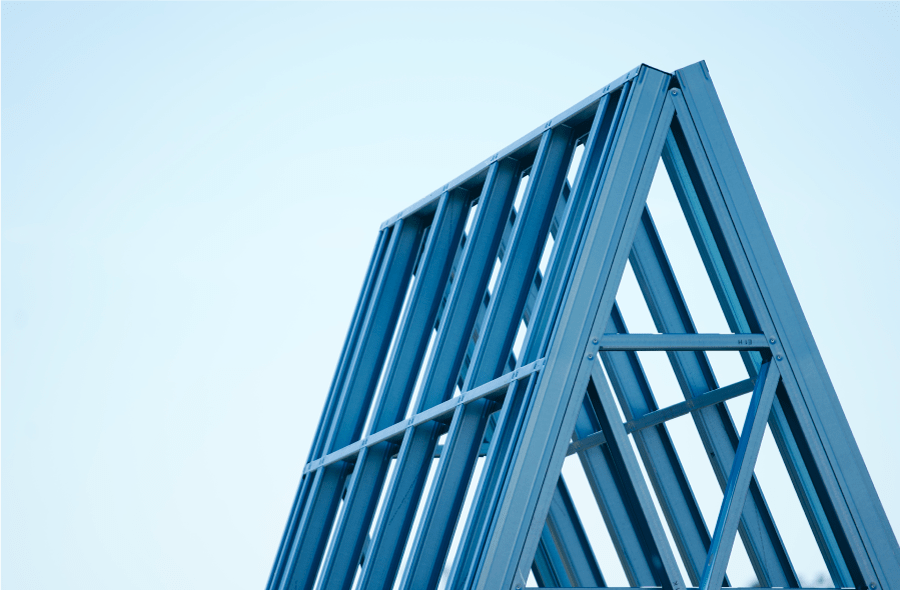When it comes to constructing a sturdy and durable building, the choice of framing material is a crucial decision. Steel framing and wood framing are two popular options, each with its unique set of benefits and drawbacks. In this comprehensive guide, we will explore the advantages of steel framing, with a special focus on Truecore Steel, the highest grade of steel in Australia, and how it stacks up against traditional wood framing.
1. Strength and Durability
Steel Framing: Steel is renowned for its unmatched strength and durability. It can withstand extreme weather conditions, resist pests, and is impervious to rot and decay. Buildings constructed with steel framing tend to have a longer lifespan compared to wood.
Wood Framing: While wood is a strong material, it is susceptible to moisture, termites, and decay. Proper maintenance is crucial to ensure its longevity, and even with care, it may not match the durability of steel.
2. Structural Integrity
Steel Framing: Steel offers superior structural integrity. It provides consistent support throughout the life of the building, reducing the risk of settling or structural issues over time.
Wood Framing: Wood can be susceptible to warping, twisting, or shrinking, which can lead to structural problems. It may require additional measures to maintain its structural integrity.
3. Fire Resistance
Steel Framing: Steel is non-combustible and inherently fire-resistant. This characteristic makes steel-framed buildings a safer choice in fire-prone areas, providing peace of mind for occupants.
Wood Framing: Wood is combustible, and while fire-resistant treatments can be applied, it may not offer the same level of protection as steel.
4. Termite and Pest Resistance
Steel Framing: Steel is impervious to termites, pests, and rodents, eliminating the need for costly pest control measures.
Wood Framing: Wood is a natural target for termites and other pests, necessitating regular inspections and treatments to prevent infestations.
5. Environmental Considerations
Steel Framing: The production of steel requires a significant amount of energy and resources. However, steel is recyclable, and the use of recycled steel in construction can offset its environmental impact.
Wood Framing: Wood is a renewable resource, and using sustainably sourced lumber can have a lower environmental impact. However, concerns over deforestation and habitat disruption persist.
6. Speed of Construction
Steel Framing: Steel framing is known for its speed of construction. Prefabricated steel components can be quickly assembled on-site, reducing construction time and labor costs.
Wood Framing: Wood framing can also be efficient, but it may take longer for intricate designs or custom-built components.
7. Design Flexibility
Steel Framing: Steel allows for greater design flexibility and can support larger spans, making it ideal for commercial and industrial buildings.
Wood Framing: Wood is versatile and suitable for a wide range of architectural styles, especially in residential construction. However, it may have limitations when it comes to large spans and complex designs.
8. Energy Efficiency
Steel Framing: Steel conducts heat and cold, so proper insulation is crucial for energy efficiency. However, when properly insulated, steel-framed buildings can be highly energy-efficient.
Wood Framing: Wood has natural insulating properties and can contribute to better energy efficiency if installed correctly. However, it may not be as effective in extreme climates without additional insulation.
Truecore Steel: Australia’s Highest Grade of Steel
In Australia, when it comes to steel framing, one name stands out above the rest: Truecore Steel. Truecore Steel is renowned for its exceptional quality and performance, making it the highest grade of steel available in the country. Here are some of the key benefits of using Truecore Steel in your construction projects:
- Unmatched Strength: Truecore Steel is engineered to provide unmatched strength and durability, ensuring that your building will stand the test of time.
- Precision Engineering: Truecore Steel is manufactured to exacting standards, ensuring consistent quality and structural integrity in every piece.
- Fire Resistance: Just like other high-quality steel, Truecore Steel is non-combustible, offering excellent fire resistance and safety.
- Pest Resistance: Truecore Steel is impervious to termites, pests, and rodents, eliminating the need for pest control measures.
- Environmentally Conscious: Truecore Steel is produced with a focus on environmental sustainability, making it a responsible choice for eco-conscious builders.
- Design Flexibility: Truecore Steel provides design flexibility, allowing architects and builders to realize their creative visions with confidence.
In the battle of steel framing vs. wood framing, the benefits of steel framing, especially when using the highest grade of steel like Truecore Steel in Australia, are evident. Steel offers superior strength, durability, fire resistance, and pest resistance. While wood has its merits, it may not match the performance and longevity of steel.
When choosing a framing material for your construction project, it’s crucial to weigh the pros and cons carefully. Consider your budget, project requirements, and long-term goals. With the numerous advantages of steel framing, especially when using Truecore Steel, it’s a choice that can provide lasting benefits and peace of mind for builders and property owners alike.




